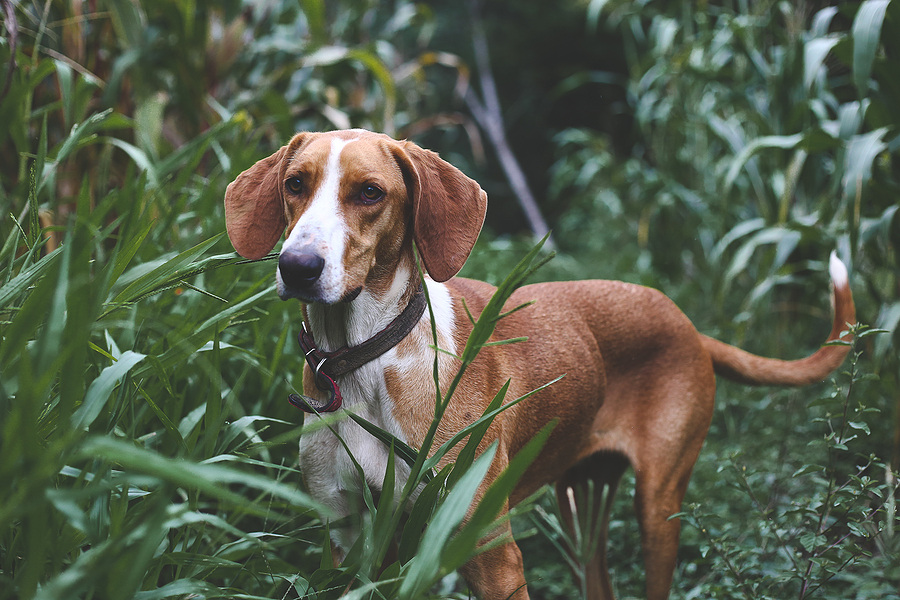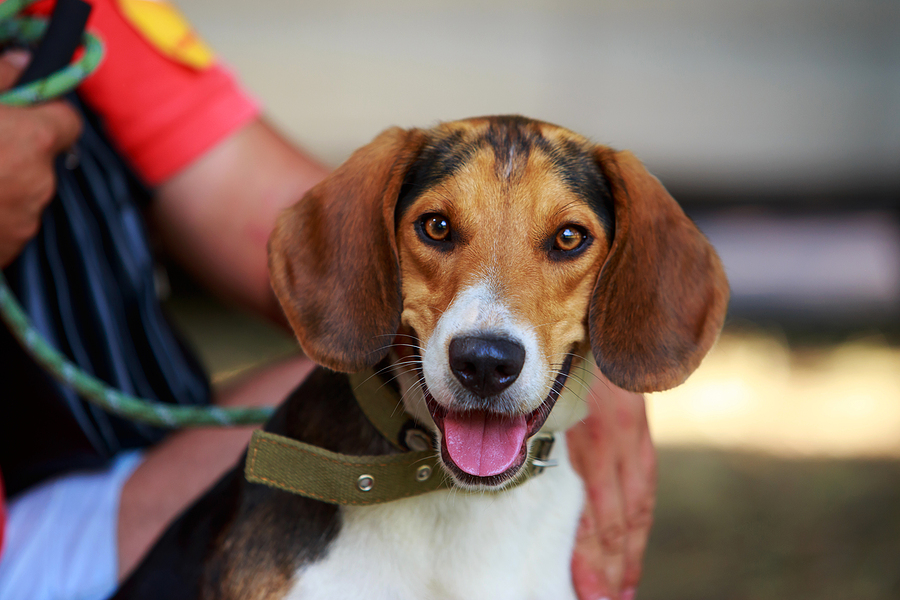American Foxhound – Breed profile on this great hunting companion
Featured image by © bigstockphoto.com / sgbrown
What is an American Foxhound?
The American Foxhound is a breed of dog that is descended from English hounds brought to America in 1650. They are scent hounds, bred to hunt foxes by scent and originated from two breeds, French and English, combined to produce the American Foxhound. The American Foxhound has an excellent nose and is known for their speed, endurance, and work ethic. George Washington, Thomas Jefferson and other founding fathers were known to have Foxhounds and were instrumental in their development as an American breed. Even though this dog has enjoyed some success as a companion dog, the American Foxhound is still primarily used as a hunting and field trial dog.
Pros and Cons
- American Foxhounds are very easy going, and great with first time owners and senior citizens
- They get along great with children and other dogs
- Shedding is minimal, and the grooming is effortless.
- American Foxhounds are easy to train.
- They are very adaptable to all living environments.
- American Foxhounds don't fare well with allergy sufferers
- They have a strong tendency to become overweight, and tend to have frequent health issues
- Although quite adaptable, they are generally not apartment-friendly dogs.
- They can have a high propensity to explore and wander off
- They can be quite aggressive toward other non-canine pets
Appearance and Size
Group: Hound Group (AKC)
Height: 21 – 25 inches
Weight: 65 – 75 pounds
The American Foxhound is lightweight, tall and log legged. Its legs are longer and more finely boned, and its loin slightly arched than its English cousin. American Foxhounds have large, soft eyes, either brown or hazel, with a sweet hound-like expression. It has ears which are broad, pendant, and flat on its slightly domed head, a muzzle of fair length, and a cheerful tail with a slight upward curve. Its short coat come in various colors.

Temperament
The American Foxhound is sweet, affectionate, gentle and loving and is great with children and other. They are very brave and intense when on the hunt, and easy-going and sweet-tempered when at home. Be wary of them around non-canine pets, as they have strong hunting instincts. They can be difficult to housebreak, and train as they can be quite independent as well. Their friendliness towards strangers can vary widely, and have been known to become protective, though Foxhounds raised in the home typically tend to be mild-tempered and easygoing companions. You should be aware that the American Foxhound will take off after an interesting scent if given the opportunity, and can be extremely difficult to call back.
Grooming
This breed is an average shedder and as their smooth, hard, short-haired coat is easy to groom. A simple weekly session with a comb and firm bristled brush will suffice. Bathe only as necessary, and trim nails every few weeks. Overall, a low maintenance dog.
Health
The American Foxhound is typically a healthy breed. They are free of many genetic diseases which plague other breeds such as hip and bone problems. Do not to overfeed this breed as they have a tendency to put on weight. Other common problems for the breed include congenital deafness, eye problems, ear infections, Pelger-Huet anomaly, and thrombocytopathy.

Life Expectancy
The American Foxhound typically lives around 10-12 Years.
5 Fun Facts About American Foxhounds
- The American Foxhound is the state dog of Virginia.
- American Foxhound gives birth to around 7 puppies on average.
- Despite its agility and endurance, the American Foxhound is a relatively rare breed today.
- The American Foxhound's origins date back to the 1700’s in Virginia and Maryland. One of its early breeders was none other than George Washington.
- American Foxhounds are taller and lighter than their English Foxhounds ancestors.
Environment
American Foxhounds are active dogs are not recommended for apartment living at all. They will be at their best with acreage as they require a great deal of exercise, and can become restless and destructive if not taken on daily long walks. A large, fenced in yard at minimum. These dogs were bred specifically to spend long hours chasing after prey, so are well suited to active families that can exercise them for an hour or two per day




